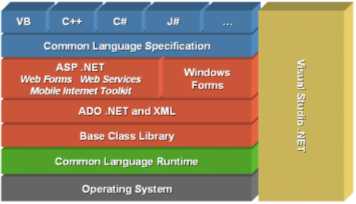The .NET Framework is made up of two major components: the common language runtime (CLR) and the framework class library (FCL). The CLR is the foundation of the .NET Framework and provides various services that applications can use. The CLR also forms the �environment� that other applications run on. The FCL is a collection of over 7000+ types that cater to all the services, and data structures that applications will ever need.
The following diagram shows the .NET Framework, its hierarchy and the associated toolset. The diagram is so famous that you can spend some time memorizing its layout!!

At the base of the diagram, you see the operating system which can be (theoretically) any platform. The Common Language Runtime (CLR) is the substrate that abstracts the underlying operating system from your code. The minute it does this, it means that your code has to run using the services provided by the CLR and we get a new name called managed code. The CLR provides its services to applications by providing a standard set of library classes that abstract all the tasks that you will ever need. These classes are called as the Base Class Libraries. On top of this, other development platforms and applications are built (like ASP.NET, ADO.NET and so on). Language compilers that need to generate code for the CLR must adhere to a common set of specifications as laid down by the Common Language Specification (CLS). Above this, you have all the popular .NET languages.
Visual Studio .NET, then is the "glue" that helps your generate .NET applications and provides an IDE that is excellent for collaborative development.








0 comments:
Post a Comment